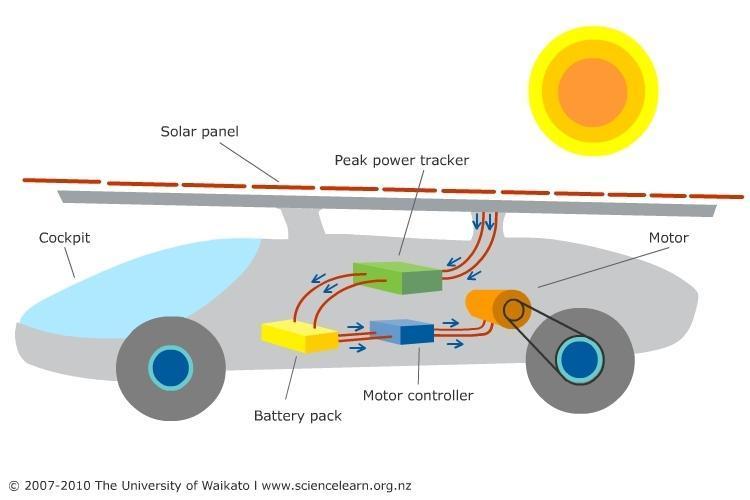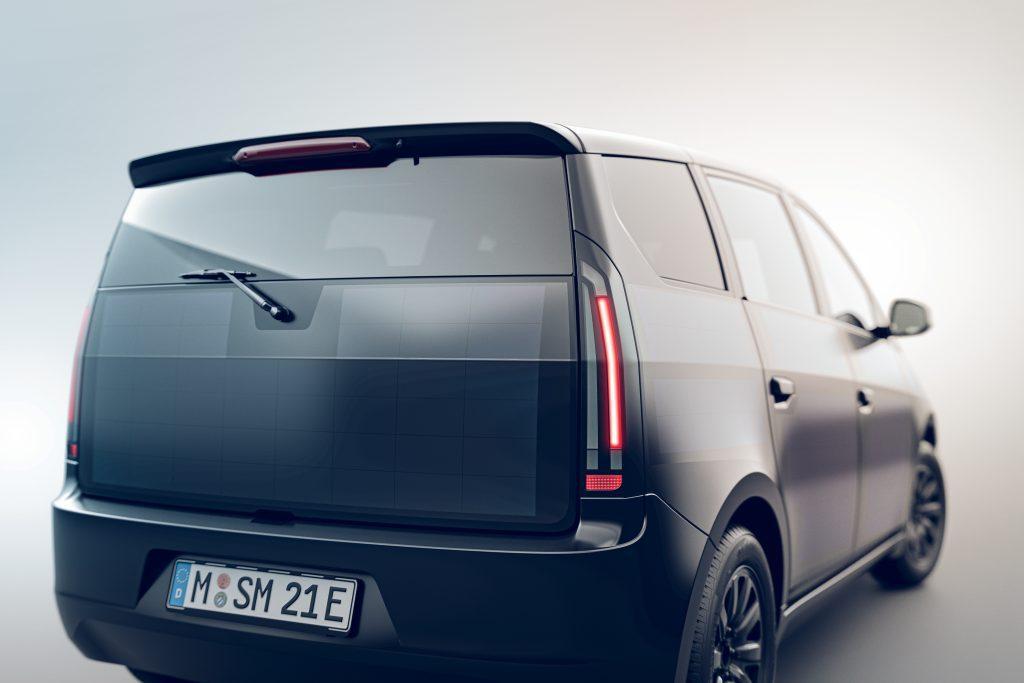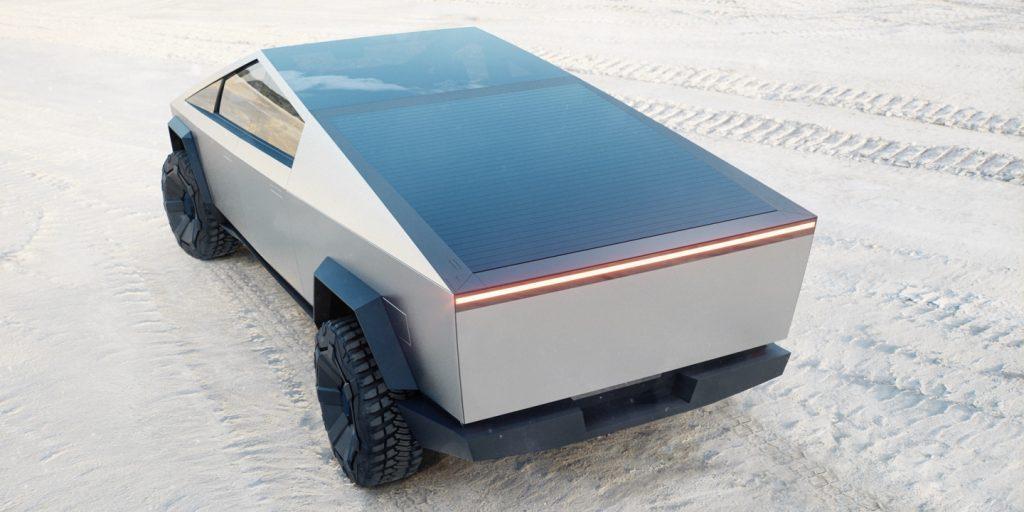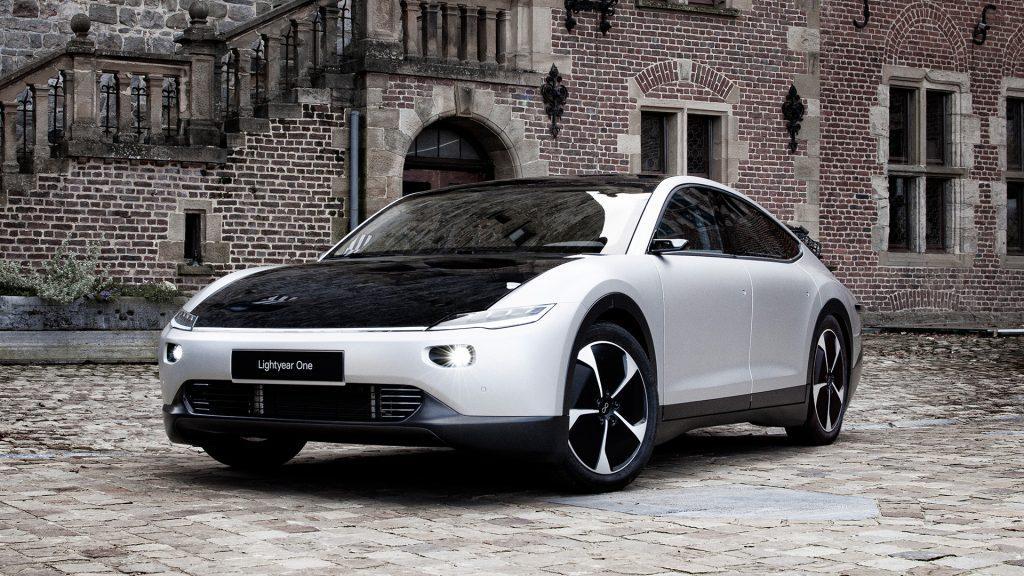The transport sector accounts for one-fifth of global carbon emissions (Ritchie, 2020). With all the discussions surrounding net-zero emissions, it is crucial that we make transportation sustainable. So, how can we achieve this? Try solar-powered cars. They could be one of the best solutions to reduce carbon emissions from transport.
How do solar-powered cars work?
Solar-powered cars run electrically, using power obtained from the sun. These cars use solar panels to harvest solar energy. Solar panels consist of photovoltaic cells that convert sunlight to electricity. The generated electricity run the electric motor of the vehicle. These photovoltaic cells consist of semiconductors made up of silicon. Solar energy frees electrons in these semiconductors, creating an electron flow. This electron flow then generates electricity to power up the motor of the car.
This begs the question – can we drive these cars at night? The answer is yes. During the daytime, solar energy charges the car’s battery. Cars are able to run with this stored energy. Still, the charging capacity of the battery may vary for different car models.

How far can we drive a solar-powered car?
The distance solar-powered cars drive depend on the efficiency of their solar panels. The efficiency of a solar panel then depends on the cell temperature and energy conversion efficiency.
It is estimated that a car entirely covered with solar panels could only operate for a maximum of 40 km per day. This is assuming weather conditions are perfect.
For example, the Sion electric car from Sono Motors in Germany has 248 solar cells integrated into the car. It can run up to an average of 245 km per week under a fully charged battery.

The Bridgestone World Solar Challenge is a great opportunity to encourage young inventors to design efficient solar cars. It is one of the most prestigious solar car events. In this challenge, participants design and build solar cars that can run 3000 km in an outback route from Darwin to Adelaide.
The costs
Are solar-powered cars affordable? The cost of a solar-powered car may differ according to its developer. For example, the list below outlines the various costs of solar-powered vehicles:
- California’s Aptera Motors is starting its distribution of the first ever mass-produced solar car in 2021. It consists of 34 square feet of solar cells and could provide energy to drive up to 64 km on a clear sunny day. The cost will be USD 25,900.
- Germany’s Sono Motor’s Sion electric will cost USD 30,000.
- Tesla’s Cybertruck has yet to be released to the market.
- Dutch start-up company’s Lightyear One will cost around USD 170,000. Marketed as a luxurious solar car, it can drive up to 800 km on a single charge (Jie & Inoue, 2019).


Are solar powered cars our future?
The Benefits
Solar-powered cars come with many benefits and they are;
- Relies on renewable energy. Therefore, they are sustainable and environmentally friendly.
- Reduces costs spent on fuel.
- Low maintenance with no costs required for solar panels, except battery replacements.
- Produces no greenhouse gas emissions. Thus, no pollution.
Presently, solar-powered cars are being used in motorsports. It is no secret that they are going to revolutionise the industry (Kirkland, 2020). Their use in motorsports shows just how much potential they have. However, there are some limitations that make it difficult for commercial use.
The Limitations
Current commercial solar panels lack efficiency, having only about 20-35% efficiency (Vyas, 2021). Thus, in order to power solar-powered cars, it will require numerous solar cells. Adding more solar cells means a need for more space. It also adds weight to vehicles and ultimately increases their costs.
However, researchers have carried out studies to design more efficient solar panels and lightweight batteries. Therefore, advances in technology can only increase the efficiency of solar panels and battery storage. As a result, in the near future, everyone will be able to enjoy a ride in cost-effective solar-powered cars.
As we approach net-zero emissions, sustainable modes of transportation will be critical. Solar-powered cars offer an emission-free mode of transport! To learn more about sustainability, visit our THRIVE blog for more information. Let’s work together to make this world a greener place.























